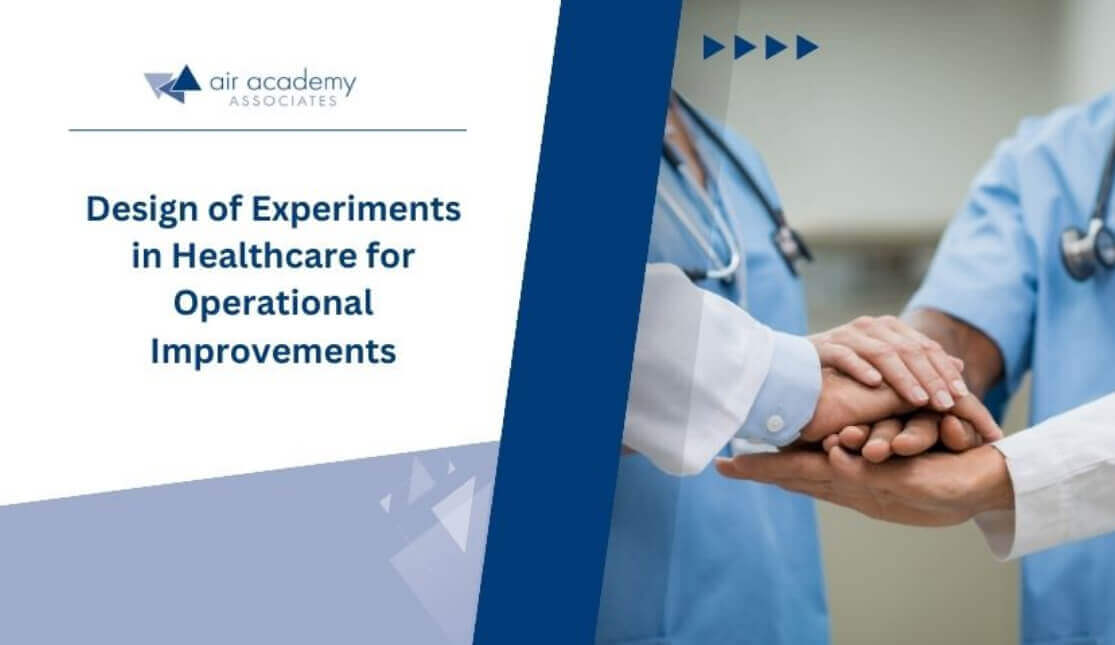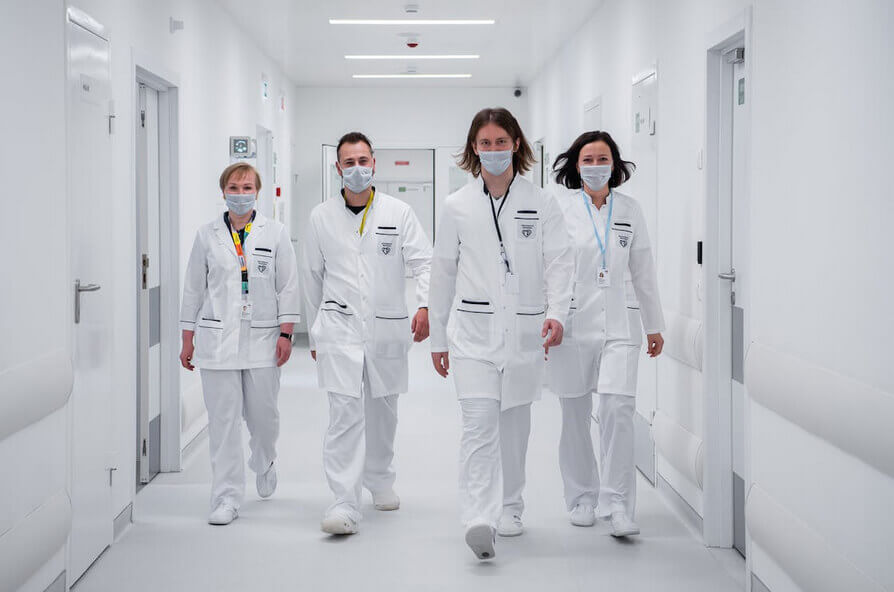
Operational experimentation, mainly through the application of Design of Experiments (DOE), is emerging as a critical strategy for healthcare systems aiming to enhance service delivery and operational efficiency. In the complex and dynamic healthcare environment, where patient outcomes and service quality are paramount, leveraging DOE can provide a structured, statistical framework for identifying optimal operational processes.
The healthcare industry is constantly pressured to improve patient care while managing costs. In this context, DOE offers a robust methodology for systematically testing changes in operational procedures and analyzing their impact. By employing DOE, healthcare managers and leaders can make data-driven decisions that improve patient satisfaction, reduce operating costs, and improve overall healthcare outcomes.
The following sections will explore the principles of DOE, its applications, challenges, strategies for effective implementation, and future directions, providing a comprehensive guide for business leaders and managers in healthcare systems on how to leverage this powerful tool for operational improvements.
Takeaways
- Design of Experiments (DOE) in healthcare improves operational efficiency, patient care, and service delivery through structured statistical analysis.
- Successful DOE application requires overcoming cultural resistance, managing complexity, and addressing ethical considerations in healthcare settings.
- DOE’s real-world applications, such as optimizing emergency department flow and surgery scheduling, significantly improve patient satisfaction and operational outcomes.
- Implementing DOE in healthcare systems necessitates strategic planning, stakeholder engagement, and continuous improvement to achieve sustainable operational excellence.
Understanding Design of Experiments (DOE)

Image Source: Freepik
The Design of Experiments (DOE) is a systematic, rigorous approach to engineering problem-solving that uses statistical methods to design and analyze experiments. It enables the identification of the relationships between factors affecting a process and its outcome. In healthcare systems, where operations are complex and multifaceted, DOE provides a structured methodology to investigate the impact of various operational changes on efficiency and patient care quality.
Definition and Principles of DOE
DOE involves planning, conducting, analyzing, and interpreting controlled tests to evaluate the factors that control the value of a parameter or group of parameters. The fundamental principles of DOE include randomization, replication, and blocking. These principles ensure that the experiments are free from bias and that the results are reliable and reproducible.
- Randomization ensures that the assignment of treatment conditions to experimental units is random, which helps minimize the effects of confounding variables.
- Replication involves repeating the experiment multiple times to estimate the experimental error and increase the reliability of the results.
- Blocking reduces the impact of sources of variability that cannot be controlled or eliminated by grouping similar experimental units and ensuring that each treatment is applied in each block.
Benefits of Applying DOE in Healthcare Settings
The application of DOE in healthcare operations can lead to significant improvements in service delivery, patient care, and operational efficiency. Below are the key benefits:
1. Optimization of Processes
DOE helps identify the most effective combinations of process variables that lead to optimal outcomes. This is particularly beneficial in healthcare settings for optimizing treatment protocols, patient flow, and resource allocation.
2. Enhanced Quality of Care
By systematically testing and implementing operational changes, healthcare providers can improve patient care quality. DOE can help identify factors impacting patient outcomes, leading to more informed decisions and practices.
3. Cost Reduction
Through the efficient design of experiments, healthcare organizations can identify cost-saving opportunities without compromising the quality of care. For example, DOE can be used to determine the most cost-effective staffing levels or optimize the use of medical supplies.
4. Improved Patient Satisfaction
DOE can improve patient satisfaction by focusing on factors affecting patient experiences, such as wait times, treatment effectiveness, and service quality. Happy patients are likelier to adhere to treatment plans and engage in positive health behaviors.
5. Evidence-based Decision Making
DOE provides a robust framework for making decisions based on empirical evidence rather than intuition or anecdotal evidence. This scientific approach to problem-solving ensures that operational improvements are grounded in reliable data.
6. Risk Management
By understanding the impact of various factors on healthcare operations, leaders and managers can better anticipate potential risks and implement strategies to mitigate them. DOE can be instrumental in developing robust risk management plans that ensure patient safety and operational continuity.
Applications of DOE in Healthcare

Image Source: Freepik
The Design of Experiments (DOE) methodology has been applied across various facets of healthcare to enhance operational efficiencies, patient care, and service delivery. This section details specific instances where DOE has been effectively implemented, providing a clear picture of its applicability and impact within healthcare settings.
Case Study 1: Improving Emergency Department Flow
One critical area in healthcare that often faces operational challenges is the Emergency Department (ED). Here, DOE was applied to analyze patient flow and identify bottlenecks causing delays. Healthcare administrators could pinpoint the most significant factors affecting patient wait times and overall ED throughput by designing experiments that varied staffing levels, patient triage procedures, and diagnostic tools.
- Implementation: The experiment involved adjusting nurse-to-patient ratios, implementing a fast-track system for less severe cases, and optimizing the use of diagnostic equipment during peak and off-peak hours.
- Outcome: The results led to a restructured triage process and a dynamic staffing model that reduced average patient wait times by 30% and increased patient satisfaction scores. This DOE application not only improved operational efficiency but also enhanced the quality of patient care by ensuring timely treatment.
Case Study 2: Optimizing Surgery Scheduling
Surgery scheduling is another complex operation within healthcare systems, where DOE has been utilized to improve efficiency and resource allocation. In this scenario, experiments were conducted to evaluate the effects of different scheduling algorithms, the allocation of operating rooms, and the scheduling of surgical teams on the utilization of surgical suites and patient outcomes.
- Implementation: The DOE varied the scheduling methods, including block scheduling versus individual case scheduling, and analyzed the impact on surgery completion times, turnover times, and patient wait times.
- Outcome: The optimized scheduling algorithm, identified through DOE, led to a 20% increase in the utilization of operating rooms and a significant reduction in the cancellation rate of surgeries. This optimization allowed for more surgeries to be conducted with the same resources, directly contributing to increased revenue and improved patient care through reduced wait times for surgical procedures.
Case Study 3: Enhancing Medication Management
Medication management in hospitals is critical for patient safety and treatment effectiveness. DOE has been applied to improve medication ordering, dispensing, and administration processes. By experimenting with electronic prescribing systems, medication delivery models, and pharmacist involvement in patient rounds, hospitals aimed to reduce medication errors and improve patient outcomes.
- Implementation: The experiments included introducing barcode medication administration systems, pharmacist-led medication reconciliation at patient admission and discharge, and optimizing medication dispensing workflows.
- Outcome: Implementing changes based on DOE findings resulted in a 40% reduction in medication errors and a shorter medication turnaround time, thereby enhancing patient safety and the efficiency of the medication management process.
These case studies illustrate the versatility and effectiveness of DOE in addressing complex operational challenges in healthcare. By systematically exploring and analyzing the impact of various factors, healthcare administrators can implement evidence-based changes that significantly improve service delivery, operational efficiency, and patient care quality. These illustrative examples show how DOE can be a valuable tool in improving healthcare systems.
Challenges and Considerations in Implementing DOE in Healthcare

Image Source: Pexels
While the Design of Experiments (DOE) offers significant potential for operational improvements in healthcare, its implementation is not without challenges. These hurdles can range from cultural resistance within organizations to technical difficulties in experiment design and execution. Understanding these challenges and considering ethical, logistical, and financial factors is crucial for successful application.
Common Challenges
- Cultural Resistance to Change: Healthcare organizations often have deeply ingrained cultures that may resist new methodologies or changes in standard practices. Introducing DOE requires fostering a culture of continuous improvement and experimentation, which can be met with skepticism or resistance from staff accustomed to traditional working methods.
- The complexity of Healthcare Settings: The multifaceted nature of healthcare operations, with its myriad of variables and the critical importance of patient outcomes, adds complexity to designing and implementing experiments. Identifying the right variables to study and ensuring that experiments do not negatively impact patient care can be challenging.
- Data Management and Analysis: DOE relies heavily on data collection, management, and analysis. Healthcare systems must have the infrastructure and expertise to handle large datasets and perform complex statistical analyses. This can be a significant barrier, particularly for smaller organizations with limited resources.
- Ethical Considerations: Any experimentation in healthcare must prioritize patient safety and ethical considerations. Experiments must be designed to ensure patients are not harmed and patient confidentiality is maintained. Gaining approval from ethics committees can also add to the time and complexity of initiating DOE projects.
Ethical, Logistical, and Financial Considerations
- Ethical Considerations: Ethical oversight, including operational experimentation, is paramount in healthcare research. Ethics committees must review and approve protocols to ensure they adhere to the highest patient care and data protection standards. This involves detailed planning to justify the experiment’s necessity and outline measures for protecting participants.
- Logistical Considerations: Implementing DOE in a healthcare setting involves coordination across various departments, managing changes to workflow, and ensuring staff are trained in new procedures. Additionally, experiments must be carefully planned to minimize patient care and service disruption.
- Financial Considerations: Implementing DOE can require significant investment in time and resources. Costs include acquiring new technologies, staff training, and hiring statistical experts or consultants. Healthcare managers must weigh these costs against operational improvements’ potential benefits and savings.
Strategies for Overcoming Challenges
Successfully overcoming these challenges requires a strategic approach that involves:
- Engaging Stakeholders: Early engagement with all stakeholders, including healthcare staff, management, and patients, can help mitigate resistance to change. Clear communication about DOE’s goals, processes, and expected benefits is essential.
- Building Capability: Investing in staff training and development to build internal capabilities for DOE can address both cultural and technical barriers. This includes training in statistical analysis, experiment design, and data management.
- Leveraging Technology: Utilizing technology for data collection and analysis can simplify the implementation of DOE. For example, electronic health records (EHRs) can provide a rich data source for experimentation.
- Prioritizing Ethical Considerations: Establishing clear ethical guidelines and ensuring ethics committees approve all experiments can address patient safety and data privacy concerns.
- Phased Implementation: Starting with smaller, less complex experiments can demonstrate the value of DOE and build confidence among staff and stakeholders. Successes from these initial projects can then pave the way for broader implementation.
Conclusion
For business leaders and managers in healthcare, embracing DOE means committing to a culture of continuous improvement and evidence-based decision-making. It invites them to think critically, act strategically, and drive meaningful organizational change. Implementing DOE may require investment and adaptation, but the rewards — improved efficiency, enhanced patient satisfaction, and better outcomes — are profound and far-reaching. In pursuing excellence in healthcare, Design of Experiments is an invaluable tool, guiding the way towards operational optimization and exceptional patient care.
To further your understanding and application of DOE in healthcare or any operational system, consider the Operational Design of Experiments Course offered by Air Academy Associates. This comprehensive course is designed to equip professionals with the skills and knowledge necessary to conduct practical experiments, making a tangible impact on operational efficiency and performance.
We encourage healthcare system leaders and managers to seize this opportunity to enhance operational strategies and drive meaningful organizational improvements. Learn more and take your first step towards operational excellence with Air Academy Associate.


